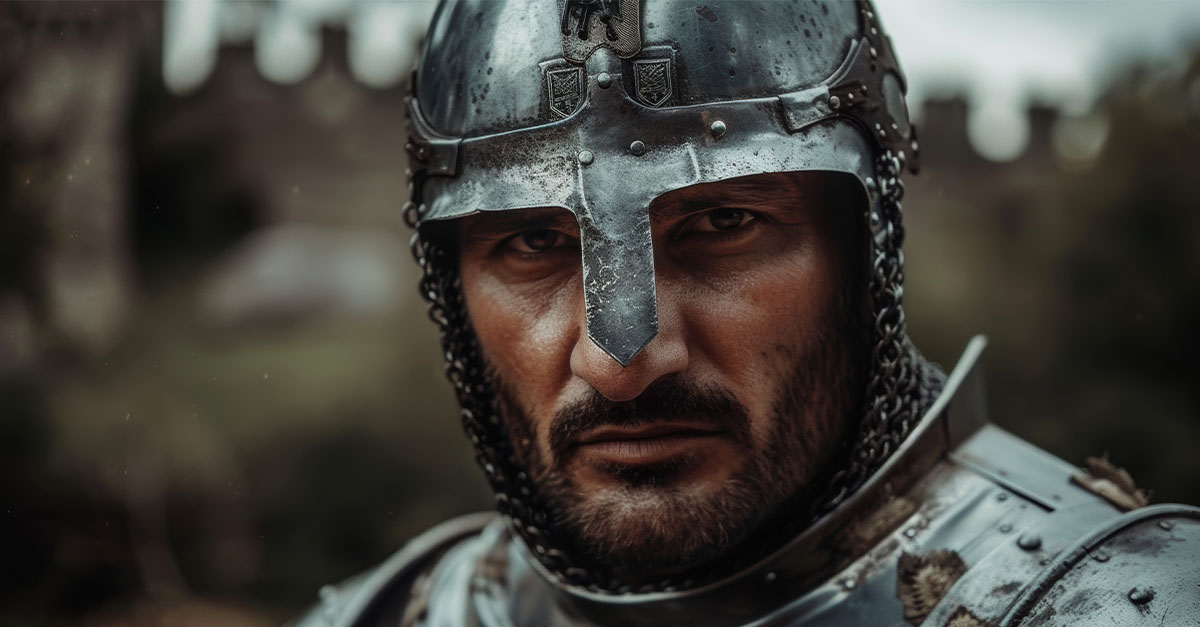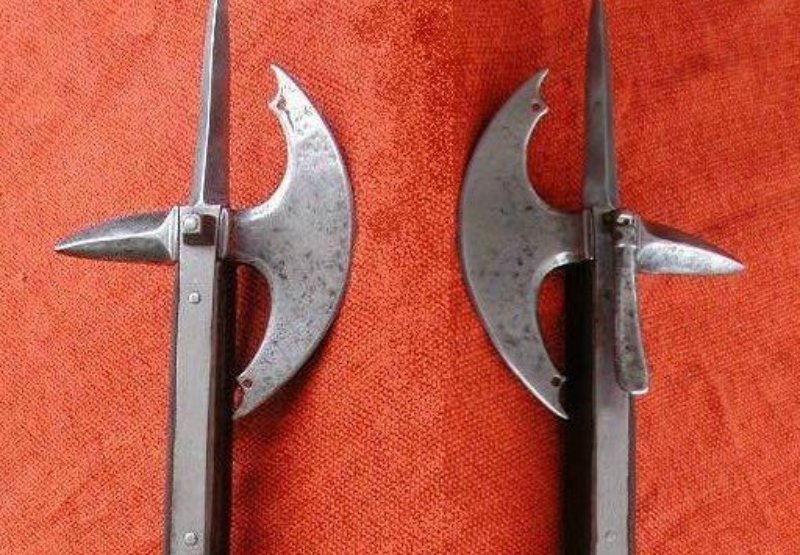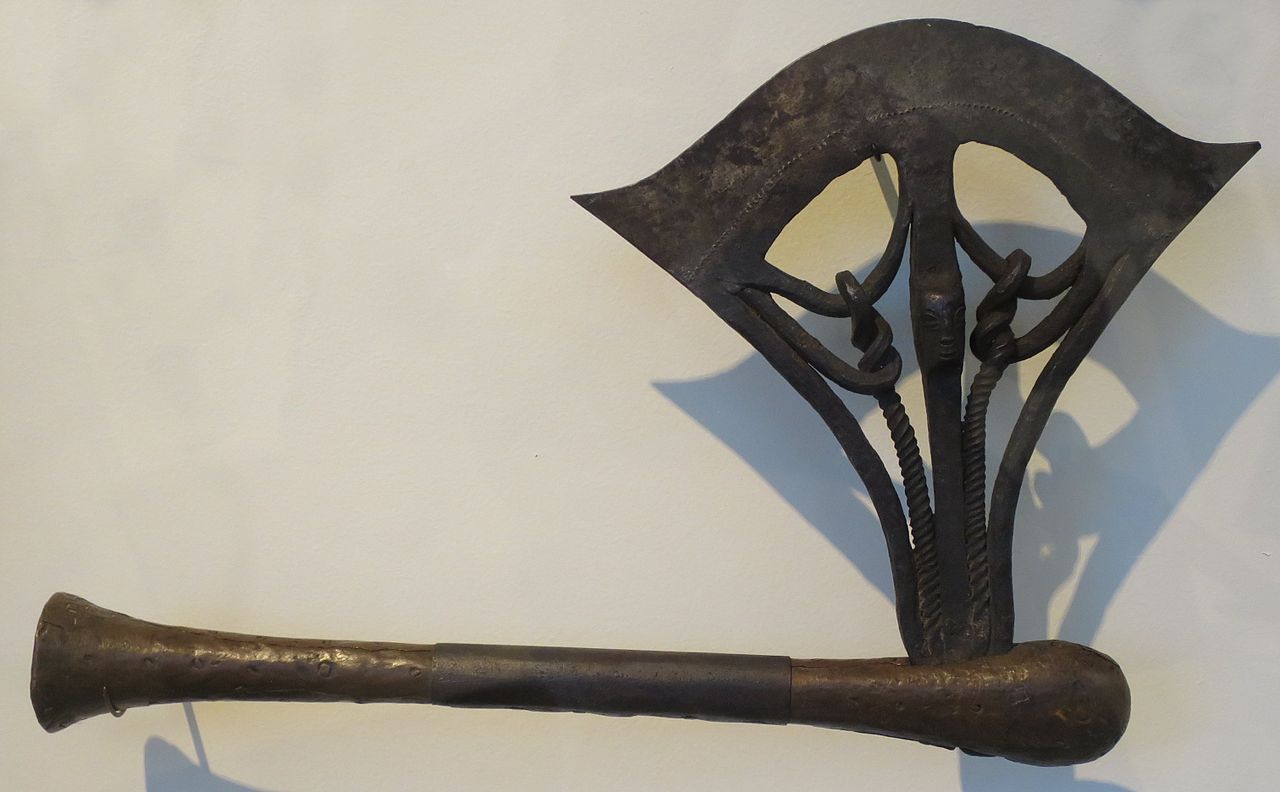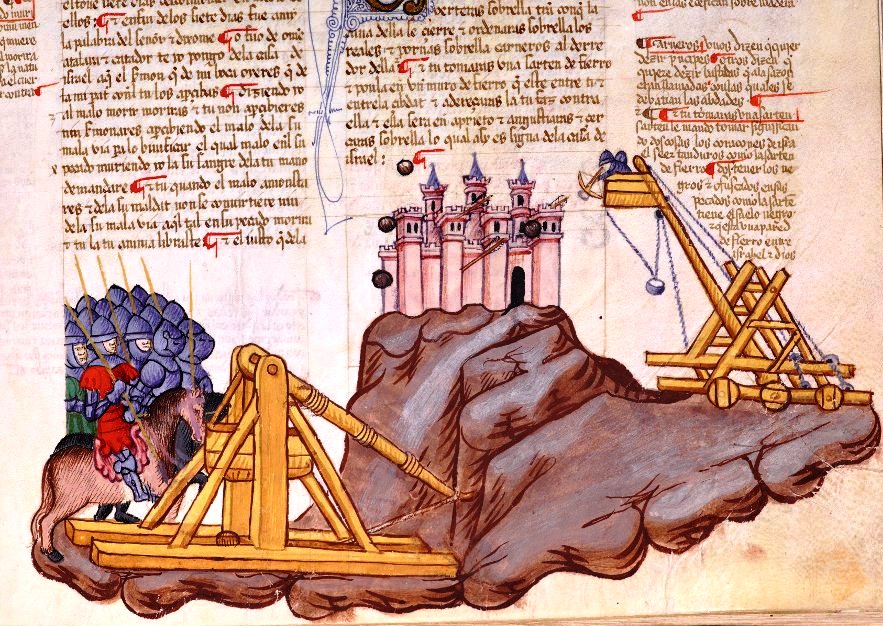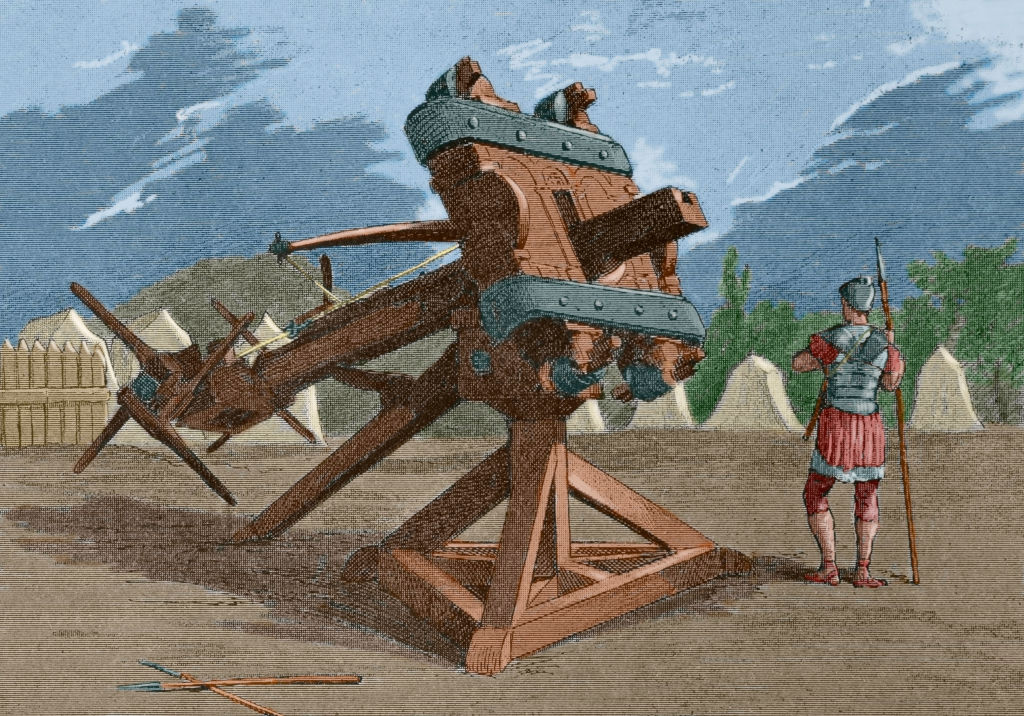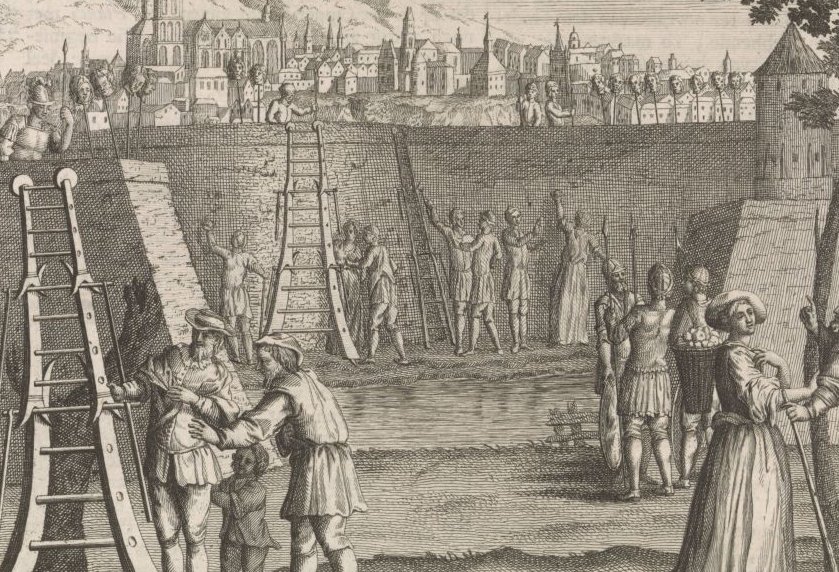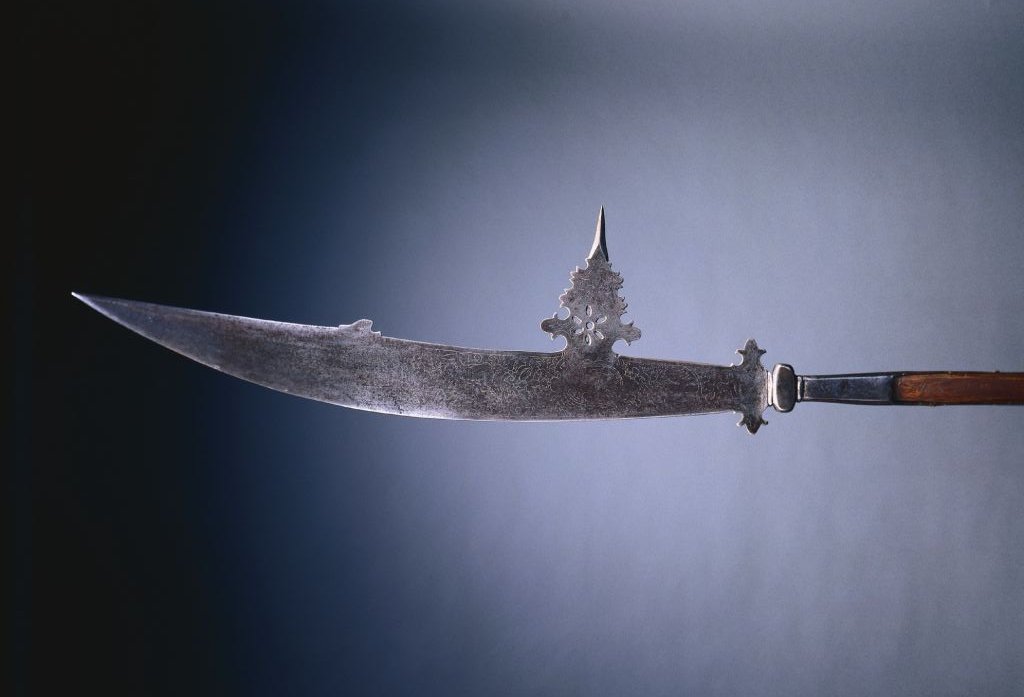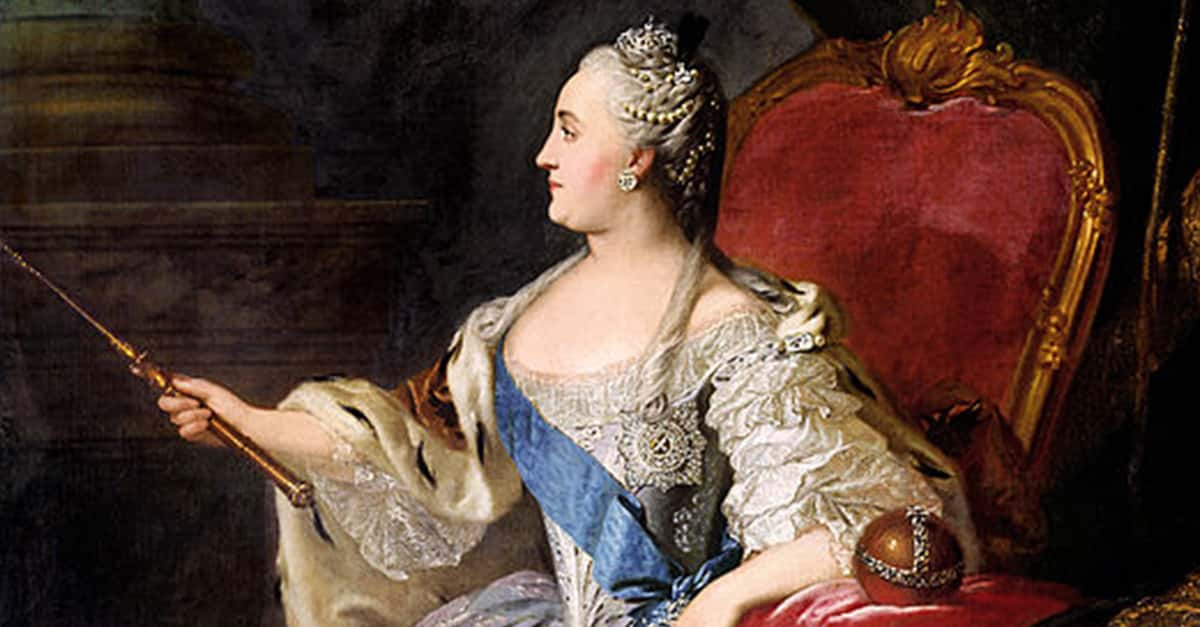Weapons That Ruled The Medieval Battlefield
Medieval battles weren’t just about swords and shields. They were brutal, creative, and often terrifying. Designed to pierce the thickest armor, the Middle Ages saw the rise of some truly nightmarish tools of battle. These inventions weren’t just about winning battles—they were about sending a message.
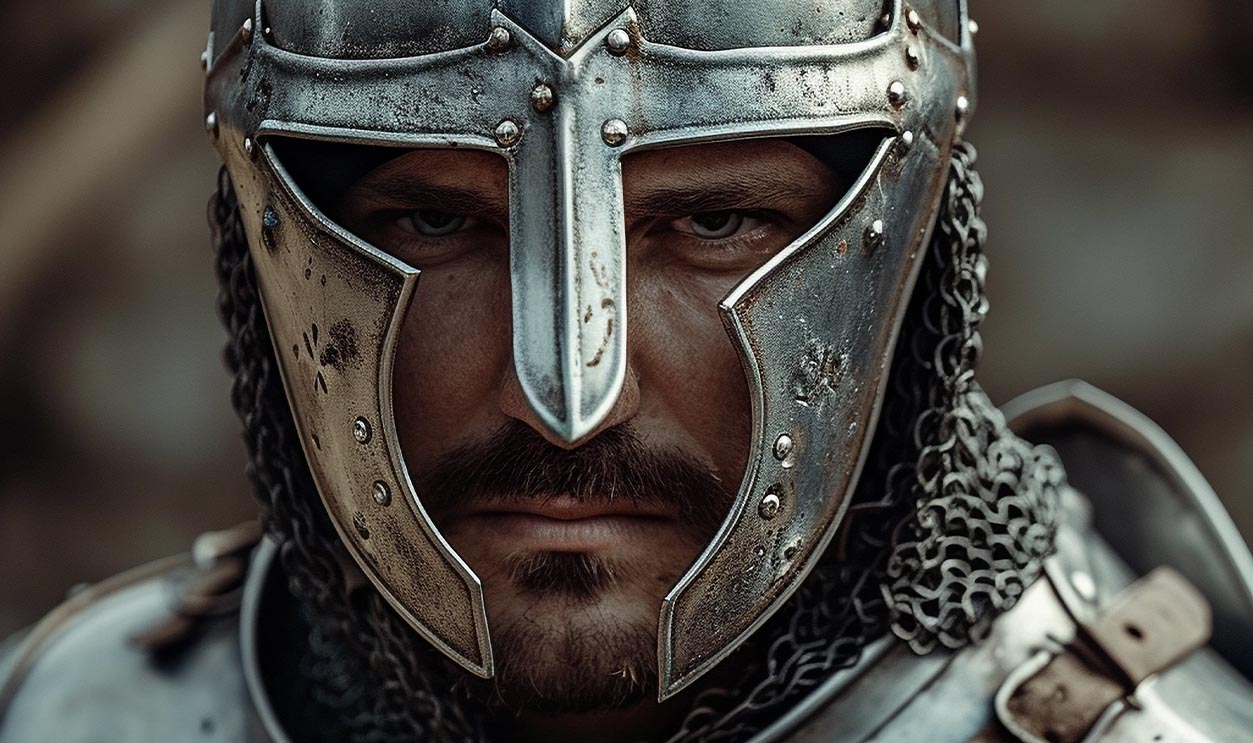
The Great Sword
Pier Gerlofs Donia, known as Grutte Pier, wielded one of history's largest swords, measuring seven feet and weighing nearly 15 pounds. This impressive blade symbolized his legendary strength and fierce reputation as a rebel leader and pirate.
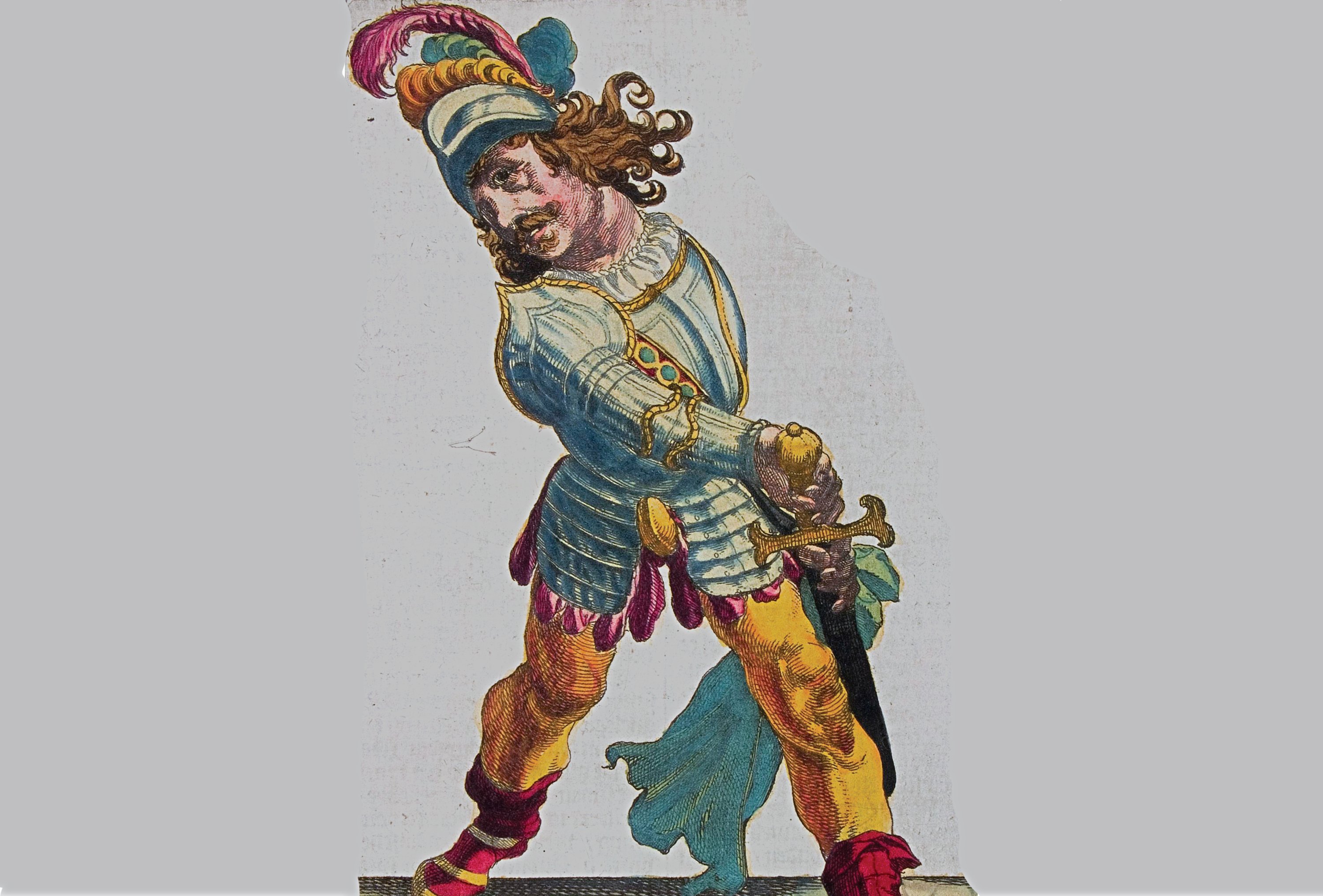 Pieter Feddes van Harlingen, Wikimedia Commons
Pieter Feddes van Harlingen, Wikimedia Commons
Crossbow
Crossbows launched shorter, heavier bolts capable of penetrating chainmail armor. Widely used by the 12th century, they eventually gave way to early gunpowder weapons like hand cannons.
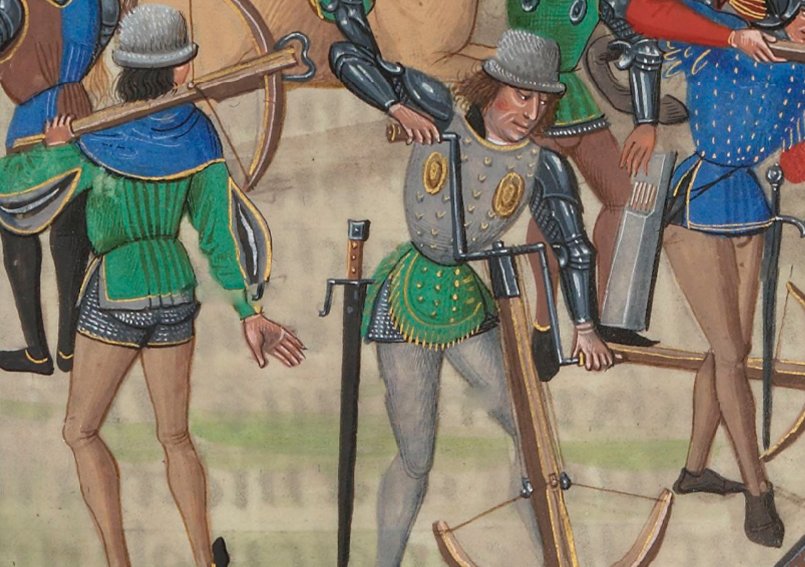 Jean Froissart, Wikimedia Commons
Jean Froissart, Wikimedia Commons
Hellburners
Invented by Federigo Giambelli, hellburners were explosive-laden ships used as floating weapons. Famously, one hellburner destroyed a bridge during the Siege of Antwerp, taking out nearly 1,000 enemy soldiers instantly.
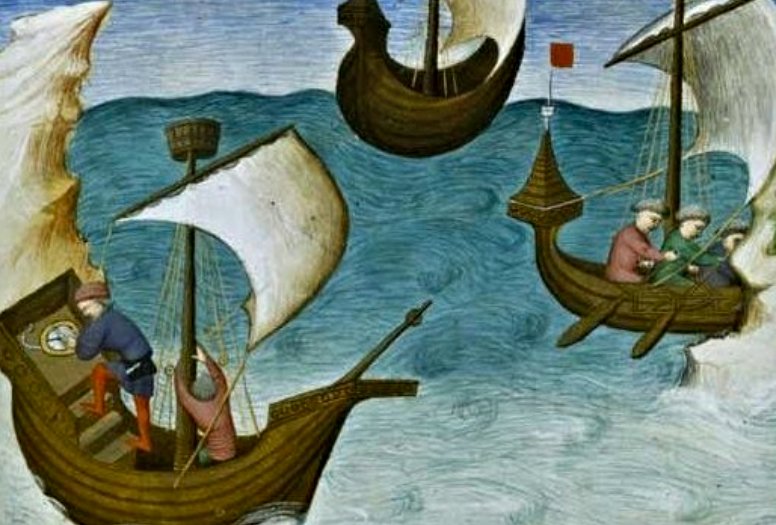 Unknown Author, Wikimedia Commons
Unknown Author, Wikimedia Commons
Man Catcher
Used to trap knights for ransom, the man catcher featured two large semi-circles mounted on a pole. Its spring mechanism closed securely around a victim's armored neck, effectively capturing them without major injury.
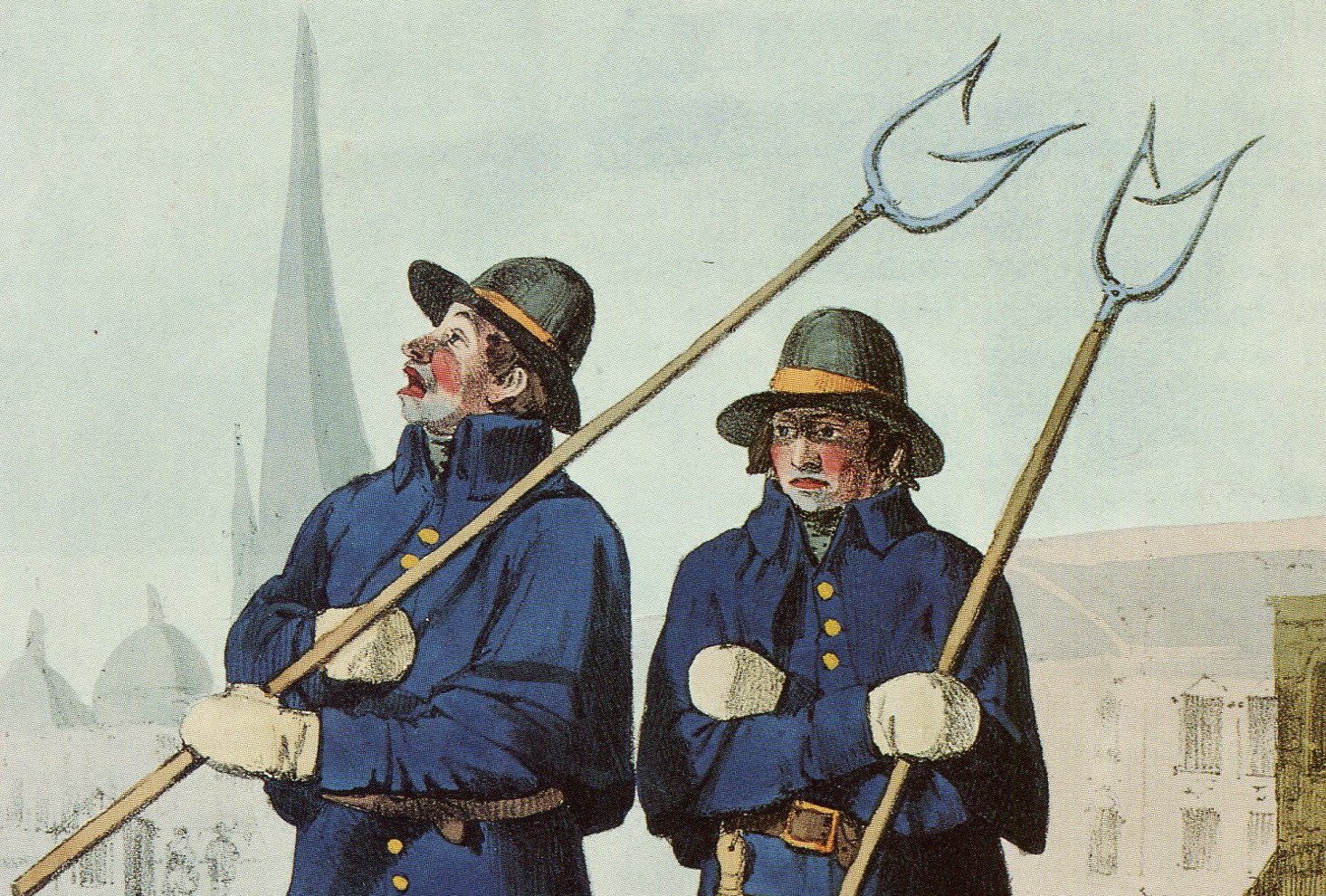 Carl Wilhelm Swedman, Wikimedia Commons
Carl Wilhelm Swedman, Wikimedia Commons
Misericorde
This slender dagger, named after the mercy stroke it delivered, ended the suffering of mortally wounded knights. Its thin blade could easily slip through armor gaps, swiftly piercing vital organs.
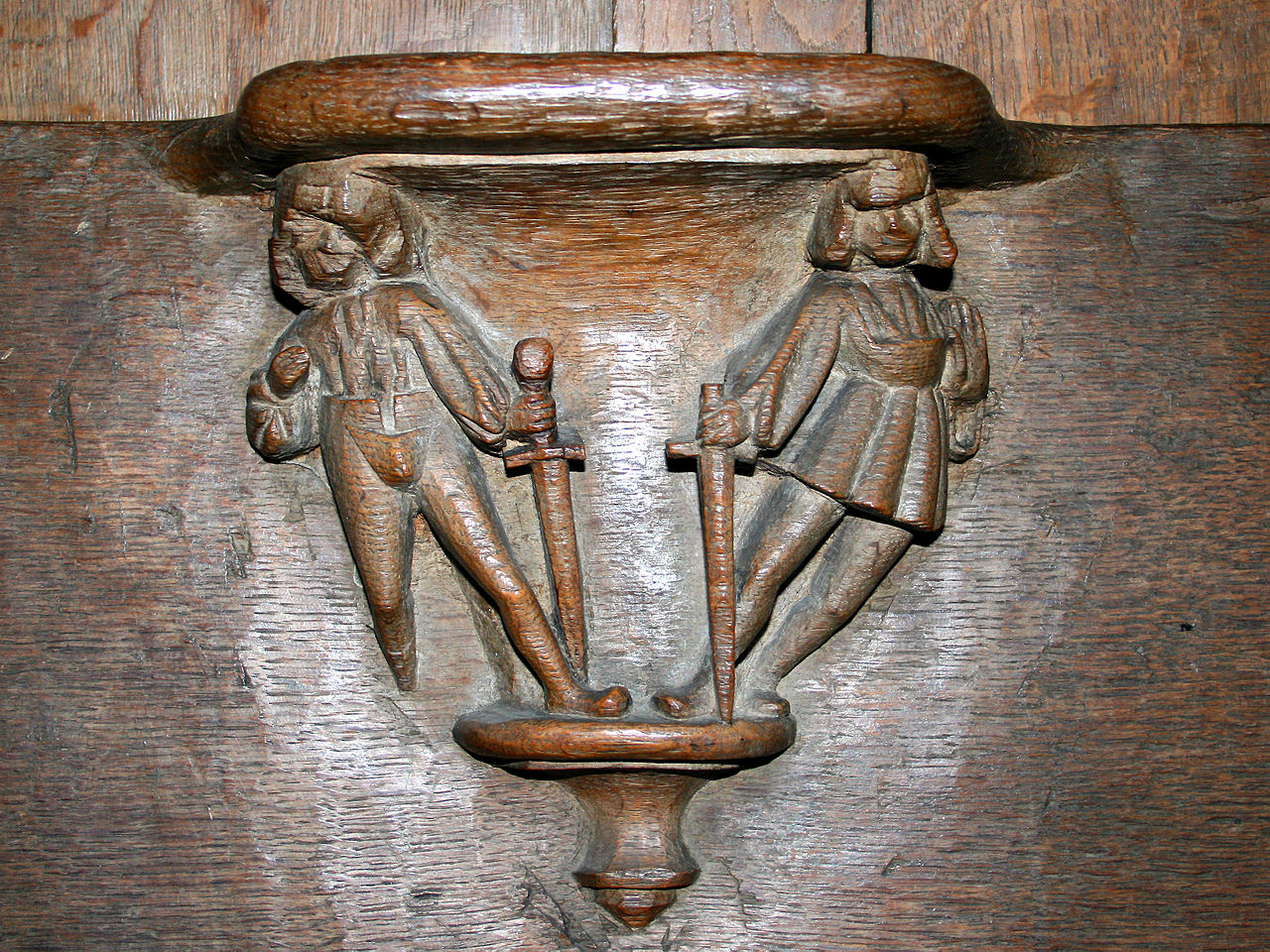 Jean-Pol GRANDMONT, CC BY 3.0, Wikimedia Commons
Jean-Pol GRANDMONT, CC BY 3.0, Wikimedia Commons
Battle Axe
Simple, inexpensive, and lethal, axes were favored by infantrymen and, occasionally, knights. Featuring additional blades and hammers, some even bore inscriptions like “De Bon Coeur,” meaning “with a good heart”.
Lance
Typically measuring between 6.6 and 9.8 feet, the lance was favored in cavalry charges for breaking enemy lines. Though effective on impact, it often broke upon collision, making it less practical afterward.
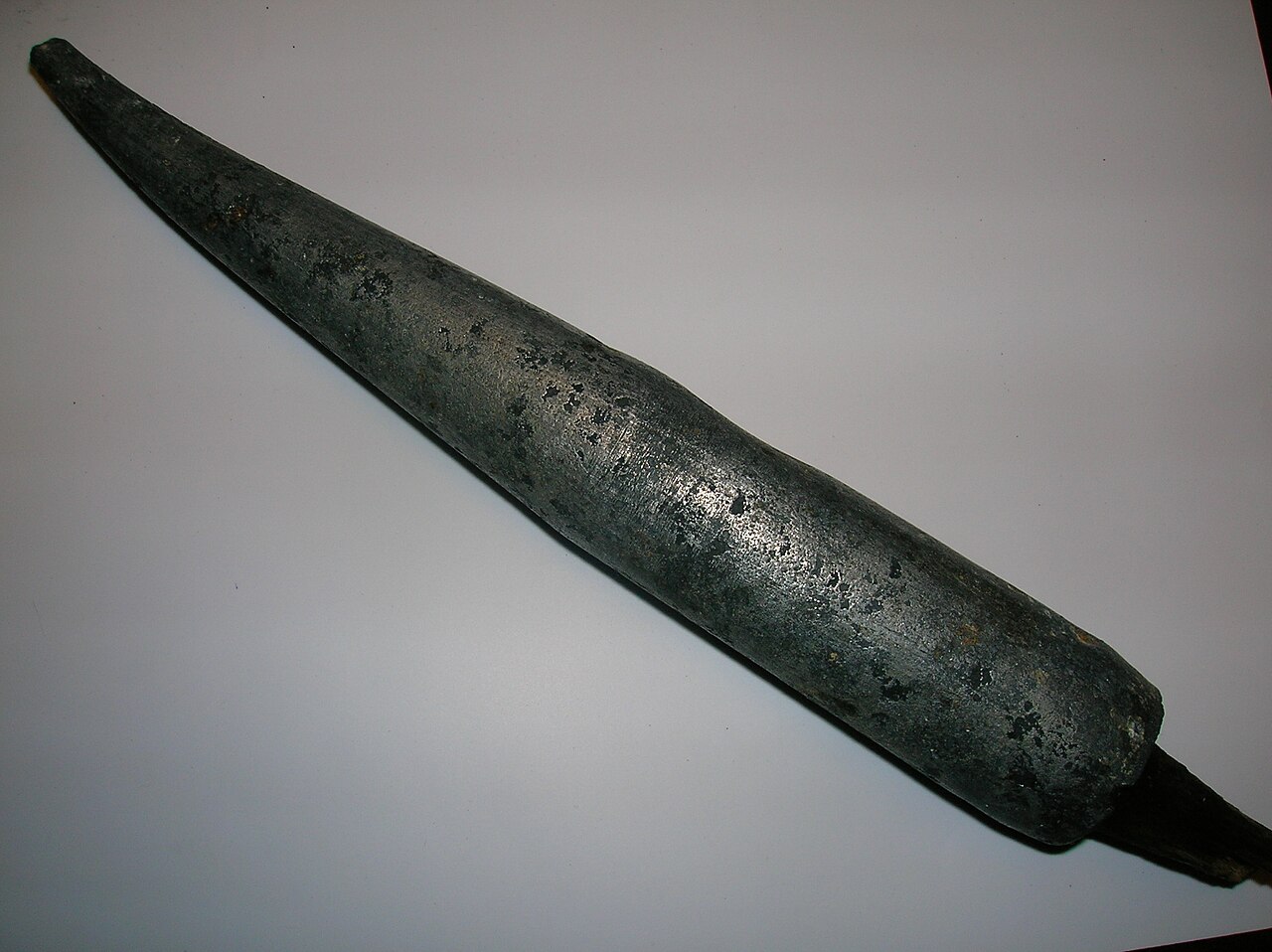 Rosser1954 Roger Griffith, Wikimedia Commons
Rosser1954 Roger Griffith, Wikimedia Commons
Pike
Ranging from 10 to 25 feet, pikes were defensive weapons that effectively countered cavalry charges. Pikemen formed structured squares, presenting a unified and impenetrable front to attackers.
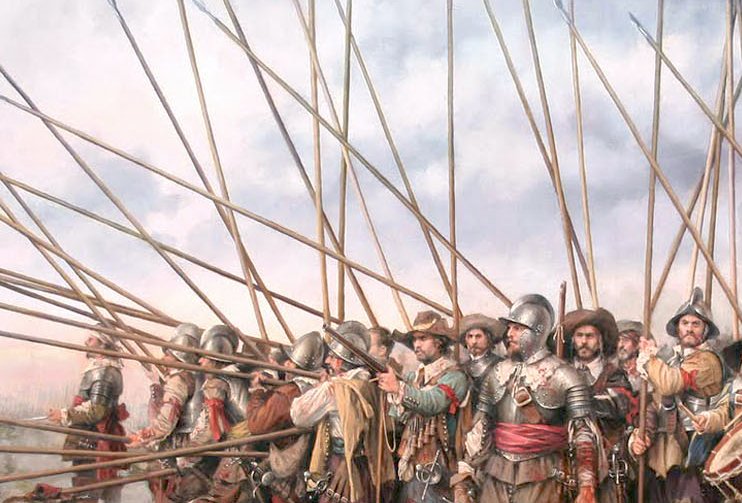 Augusto Ferrer-Dalmau, CC BY-SA 3.0, Wikimedia Commons
Augusto Ferrer-Dalmau, CC BY-SA 3.0, Wikimedia Commons

History's most fascinating stories and darkest secrets, delivered to your inbox daily.
Mace
Designed for delivering blunt trauma, maces featured heavy heads of bone or metal. The mace’s metal flanges pierced plate armor, making it highly effective in medieval combat. Even if the armor remained intact, the forceful impact of the mace could cause severe internal injuries.
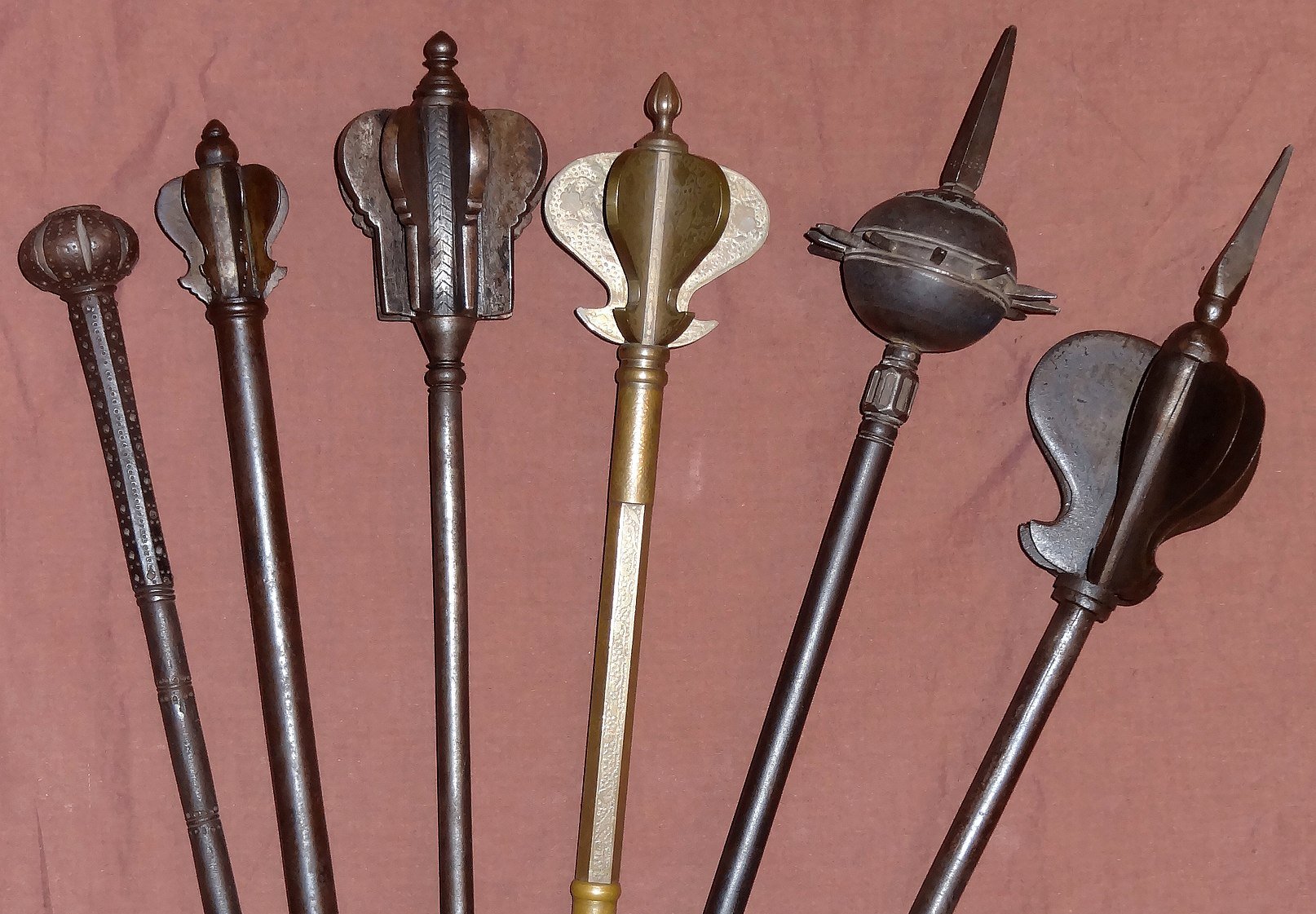 Samuraiantiqueworld, CC BY-SA 3.0, Wikimedia Commons
Samuraiantiqueworld, CC BY-SA 3.0, Wikimedia Commons
Knightly Sword
Known as “arming swords,” knightly swords were single-handed weapons evolving from Viking blades. They transitioned from slashing to thrusting as chainmail improved, necessitating blades capable of penetrating armor. The medieval arming sword featured a cross-shaped hilt and was wielded by knights. Often bearing religious inscriptions, its high production cost reserved it primarily for nobility.
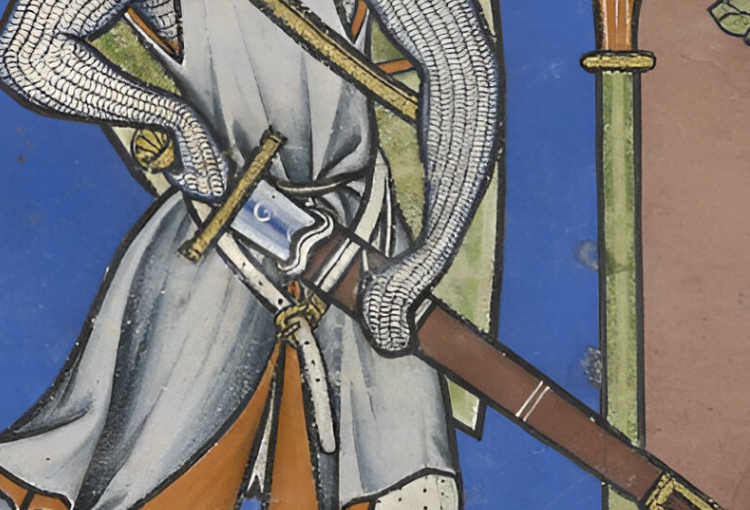 Unknown Author, Wikimedia Commons
Unknown Author, Wikimedia Commons
Longsword
Prominent from the 14th to 16th century, longswords featured double-edged blades designed for two-handed use. Effective against reinforced armor and cavalry, they eventually became ceremonial or dueling weapons.
 Hans Talhoffer, Wikimedia Commons
Hans Talhoffer, Wikimedia Commons
Morningstar
This spiked ball-and-chain weapon appeared around the 14th century and earned its name from its star-like appearance. It delivered deadly blows capable of crushing bones and piercing plate armor. Due to its brutal efficiency, shorter-handled versions were even adapted specifically for cavalry use.
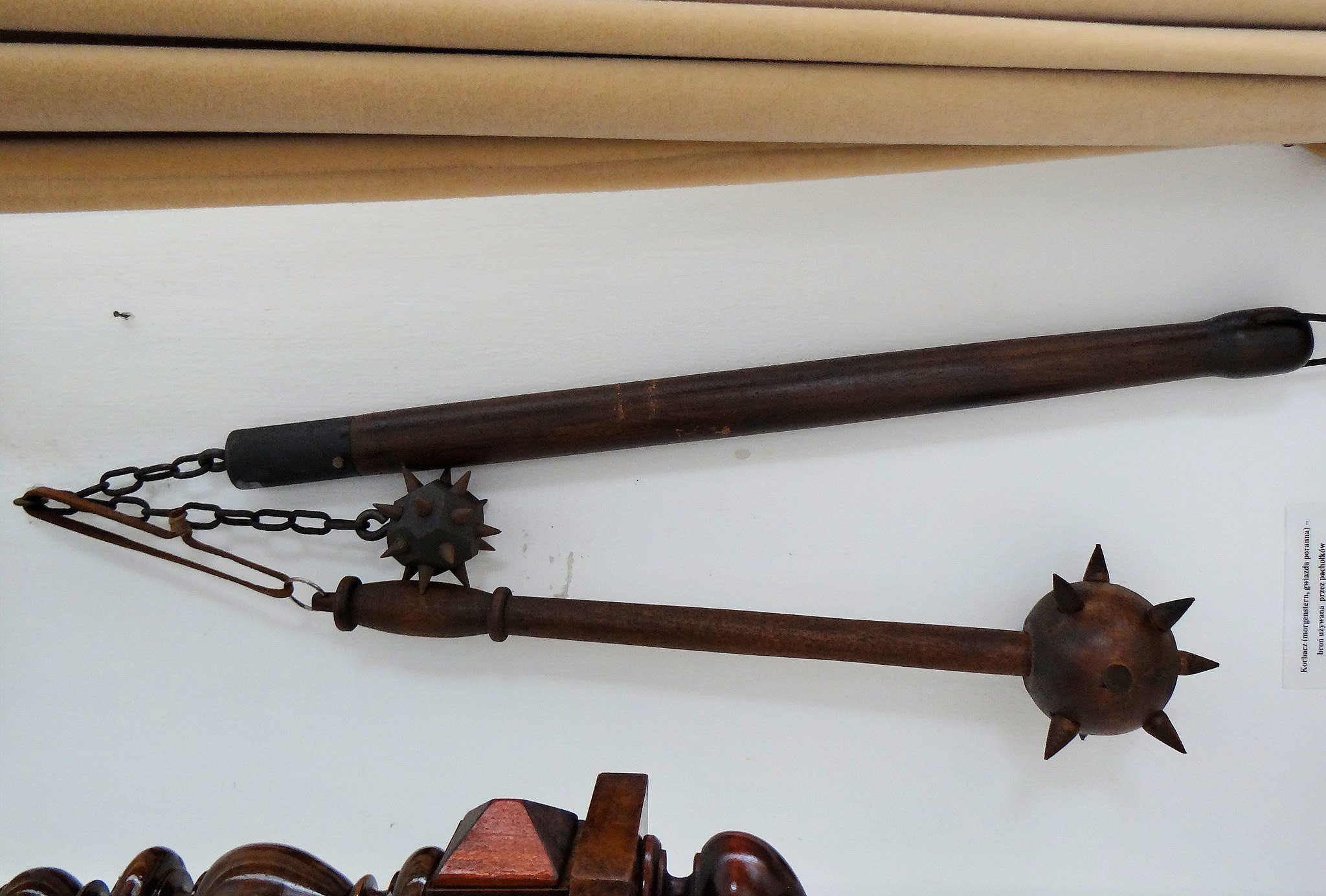 Jolanta Dyr, CC BY-SA 3.0, Wikimedia Commons
Jolanta Dyr, CC BY-SA 3.0, Wikimedia Commons
English Longbow
Renowned for its range and lethality, the English longbow devastated enemies at battles like Agincourt. Captured longbowmen faced losing fingers, emphasizing its terrifying effectiveness. Longbows required significant strength and extensive training, prompting Edward III to famously say, "If you want to train a longbowman, start with his grandfather".
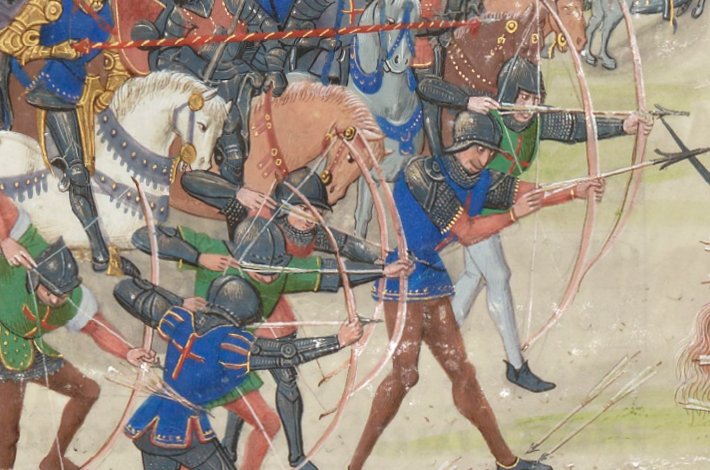 Loyset Liédet, Wikimedia Commons
Loyset Liédet, Wikimedia Commons
Stiletto
Originally from Italy, stilettos were specialized thrusting daggers causing severe internal damage with minimal external signs. Their stealth made them popular among medieval assassins and frequently banned.
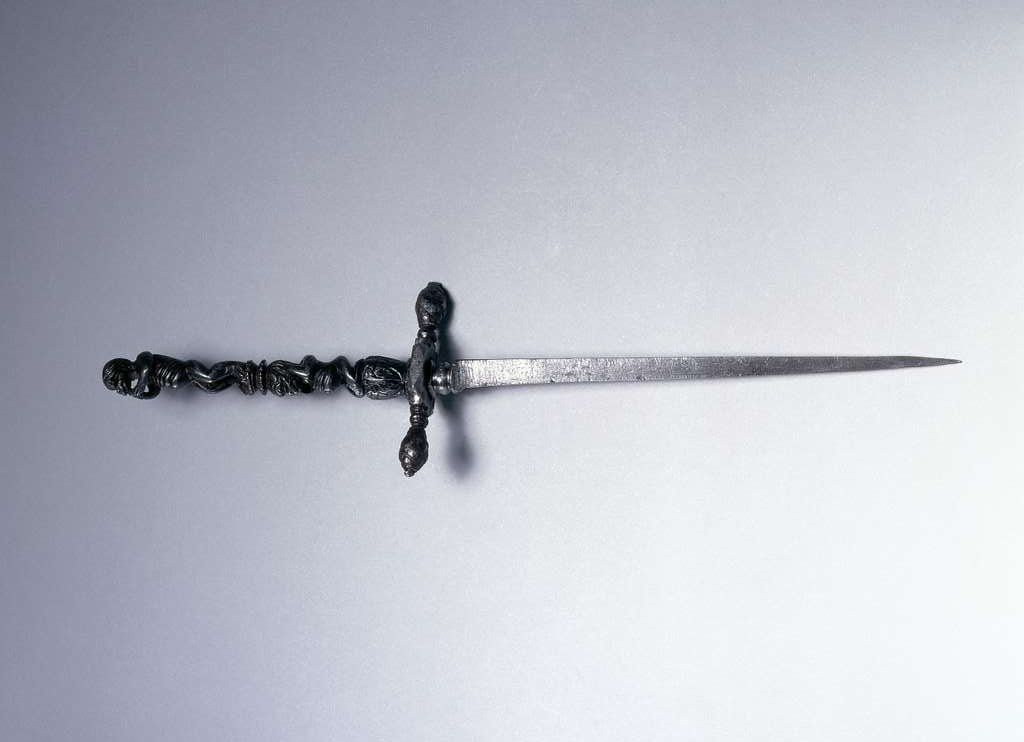 Cleveland Museum of Art, Picryl
Cleveland Museum of Art, Picryl
Throwing Axe
Thrown ahead of infantry charges, axes created confusion among enemy ranks. Even when misses occurred, their weight alone could cause considerable damage. The Francisca throwing axe, favored by Frankish warriors, was specifically designed to bounce unpredictably, intensifying enemy panic and disruption.
Halberd
Developed by Swiss infantry, halberds combined spikes, axes, and hooks to dismount cavalry. Its affordability made it popular across Europe, and the Swiss Guard still ceremonially carries it. The halberd’s hook could effectively unseat riders, while its axe blade could easily split open horses or dispatch armored knights.
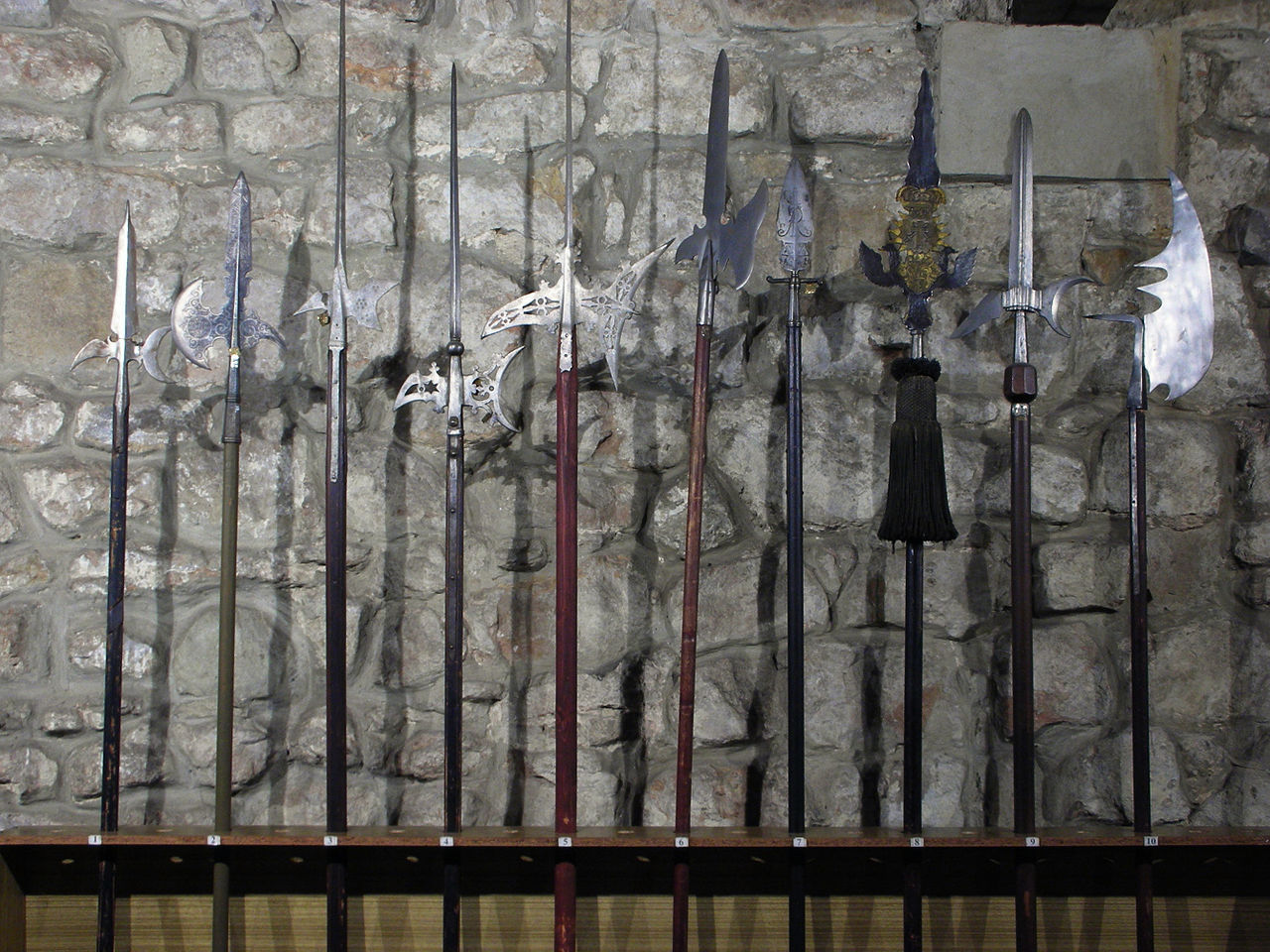 Lestat (Jan Mehlich), CC BY-SA 3.0, Wikimedia Commons
Lestat (Jan Mehlich), CC BY-SA 3.0, Wikimedia Commons
Horseman’s Pick
Originating from Islamic cavalry, horseman's picks had spikes and hammerheads designed to puncture armor. Its effectiveness led to widespread European adoption until they rendered it obsolete.
 National Museum in Kraków, Wikimedia Commons
National Museum in Kraków, Wikimedia Commons
Two Handed Sword
Massive two-handed swords, like Grutte Pier’s blade, required great strength. These weapons could cleave through enemy ranks, serving as powerful psychological deterrents.
 Palioxora, CC BY-SA 4.0, Wikimedia Commons
Palioxora, CC BY-SA 4.0, Wikimedia Commons
Short Sword
Short swords were secondary weapons for knights, providing a quick defense in close combat. Compact yet lethal, they supplemented heavier weapons effectively.
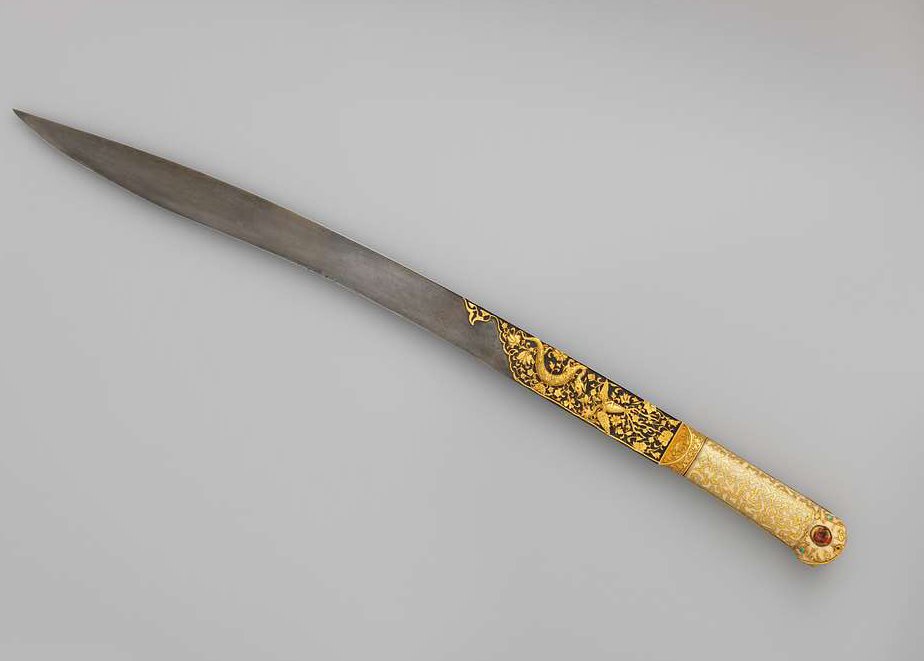 Metropolitan Museum of Art, Picryl
Metropolitan Museum of Art, Picryl
Heavy Crossbow
Requiring less strength than longbows, heavy crossbows provided devastating power with minimal training. These potent weapons were even banned by the Church for their brutality.
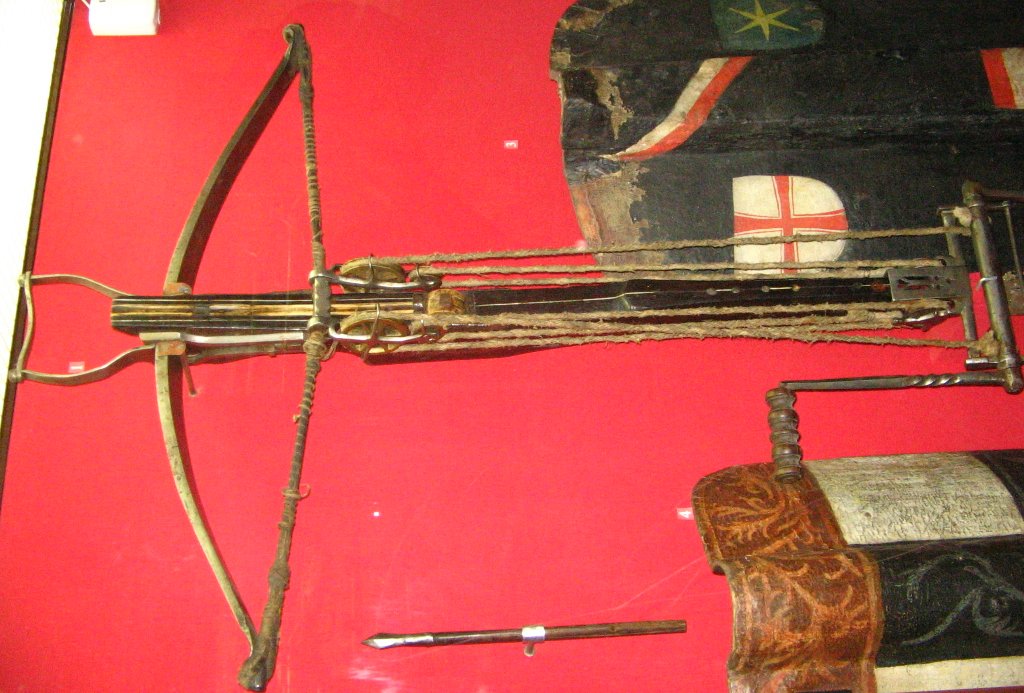 Wisky, CC BY-SA 3.0, Wikimedia Commons
Wisky, CC BY-SA 3.0, Wikimedia Commons
Ceremonial Halberd
Though originally deadly, ceremonial halberds today symbolize historic tradition. Employed by honor guards, their presence signifies respect and remembrance. The Vatican’s Swiss Guard still carries halberds as symbols of protection and tradition during official ceremonies.
 Ghent University Library, CC BY-SA 4.0, Wikimedia Commons
Ghent University Library, CC BY-SA 4.0, Wikimedia Commons
Infantry Mace
Shorter maces, approximately two to three feet long, allowed foot armed forces powerful close-combat options. They effectively bypassed armor to cause incapacitating blunt trauma.
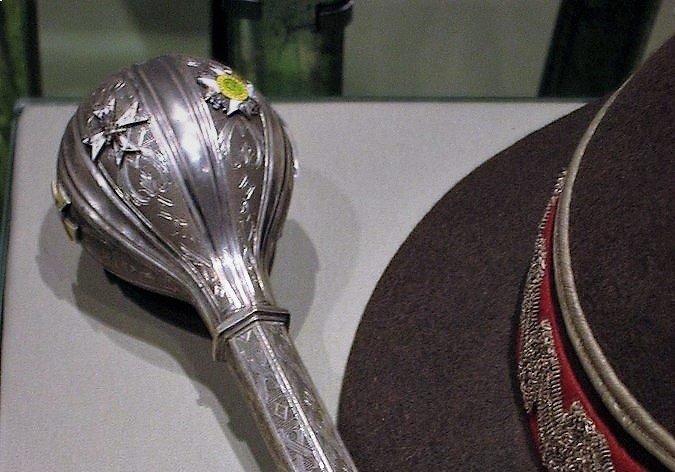 Mathiasre, CC BY-SA 3.0, Wikimedia Commons
Mathiasre, CC BY-SA 3.0, Wikimedia Commons
Cavalry Mace
Mounted cavalry used extended maces for superior reach and striking power. Added length increased maneuverability and lethal potential from horseback.
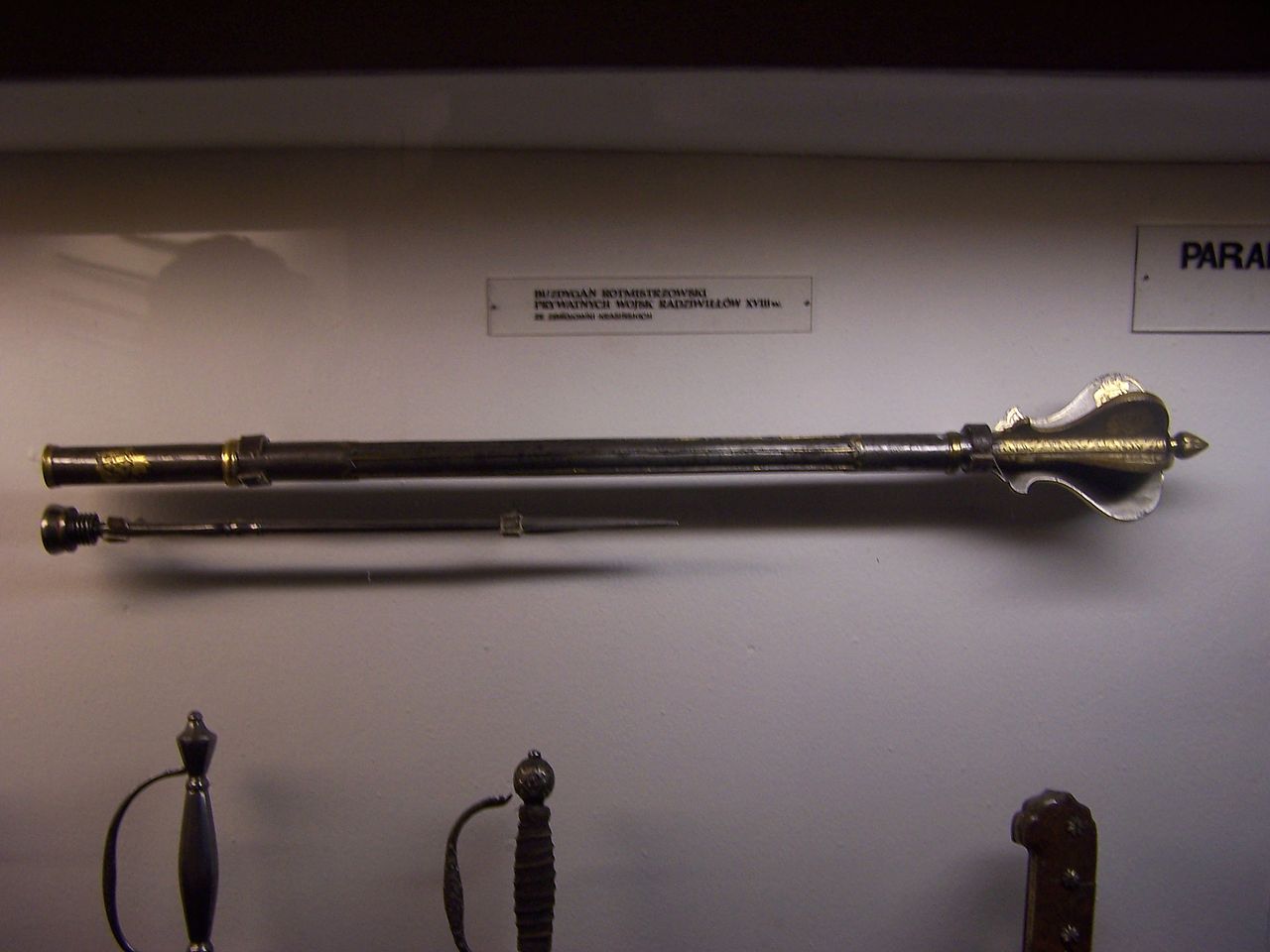 Polish Army Museum, CC BY-SA 3.0, Wikimedia Commons
Polish Army Museum, CC BY-SA 3.0, Wikimedia Commons
Chainmail Piercing Bolt
Crossbow bolts specifically weighted to puncture chainmail armor changed battlefield dynamics. The precision targeting made heavily armored knights more vulnerable.
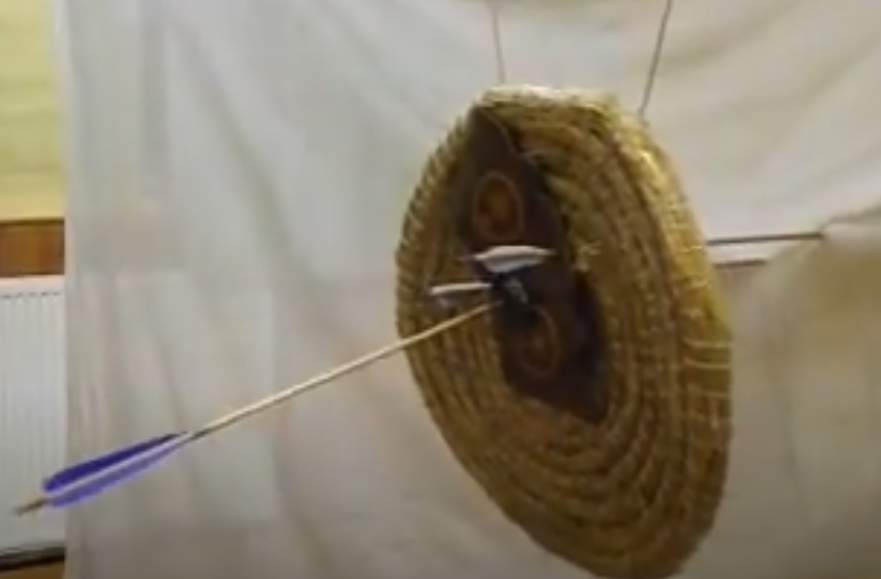 Ælfshot Archers: Chain-mail Piercing Arrow Test, Emma Boast
Ælfshot Archers: Chain-mail Piercing Arrow Test, Emma Boast
Counterweight Trebuchet
Featuring advanced mechanics, counterweight trebuchets hurled projectiles farther and more accurately. These siege engines transformed medieval battles and castle defense strategies. A single trebuchet could launch stones weighing hundreds of pounds, devastating fortifications from a considerable distance.
Siege Ballista
Similar to oversized crossbows, ballistae hurled large bolts at high velocity. Ballistae were often mounted on castle walls or siege towers, offering both offensive and defensive capabilities.
Siege Ladder
Simple yet critical, siege ladders allowed attackers to scale castle walls directly. Despite heavy casualties, ladders remained essential tools in medieval sieges. Attackers climbing ladders often faced boiling oil, arrows, and rocks hurled by defenders, making it one of the riskiest siege tactics.
Siege Tower
Rolling towers protected armed forces as they approached fortifications, enabling safe ascent onto enemy walls. Despite vulnerabilities to fire, siege towers significantly improved attackers’ odds.
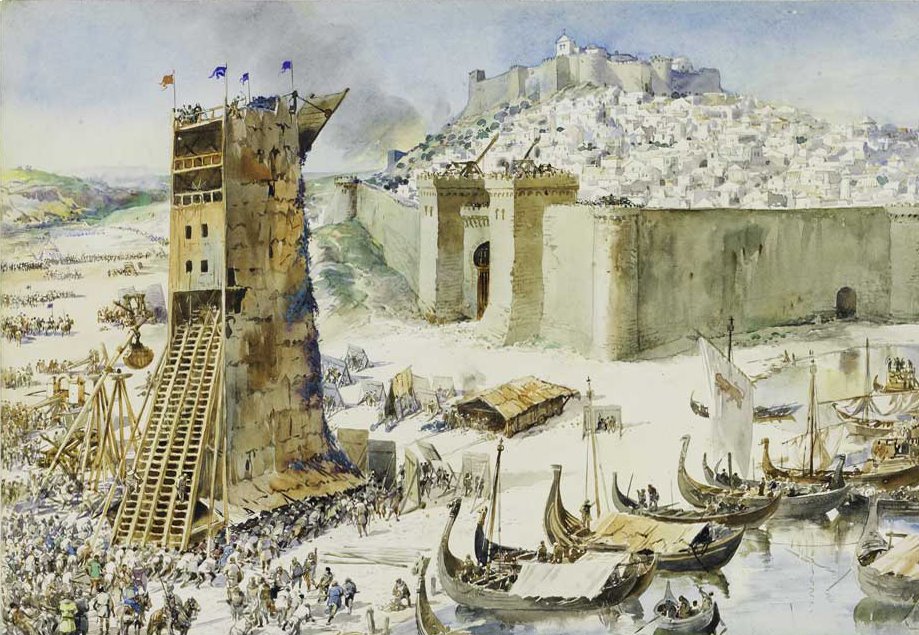 Roque Gameiro, Wikimedia Commons
Roque Gameiro, Wikimedia Commons
Flanged Mace
Flanged maces featured protruding metal edges designed explicitly to penetrate armor. Their impact caused deep, debilitating wounds even without breaching metal protection.
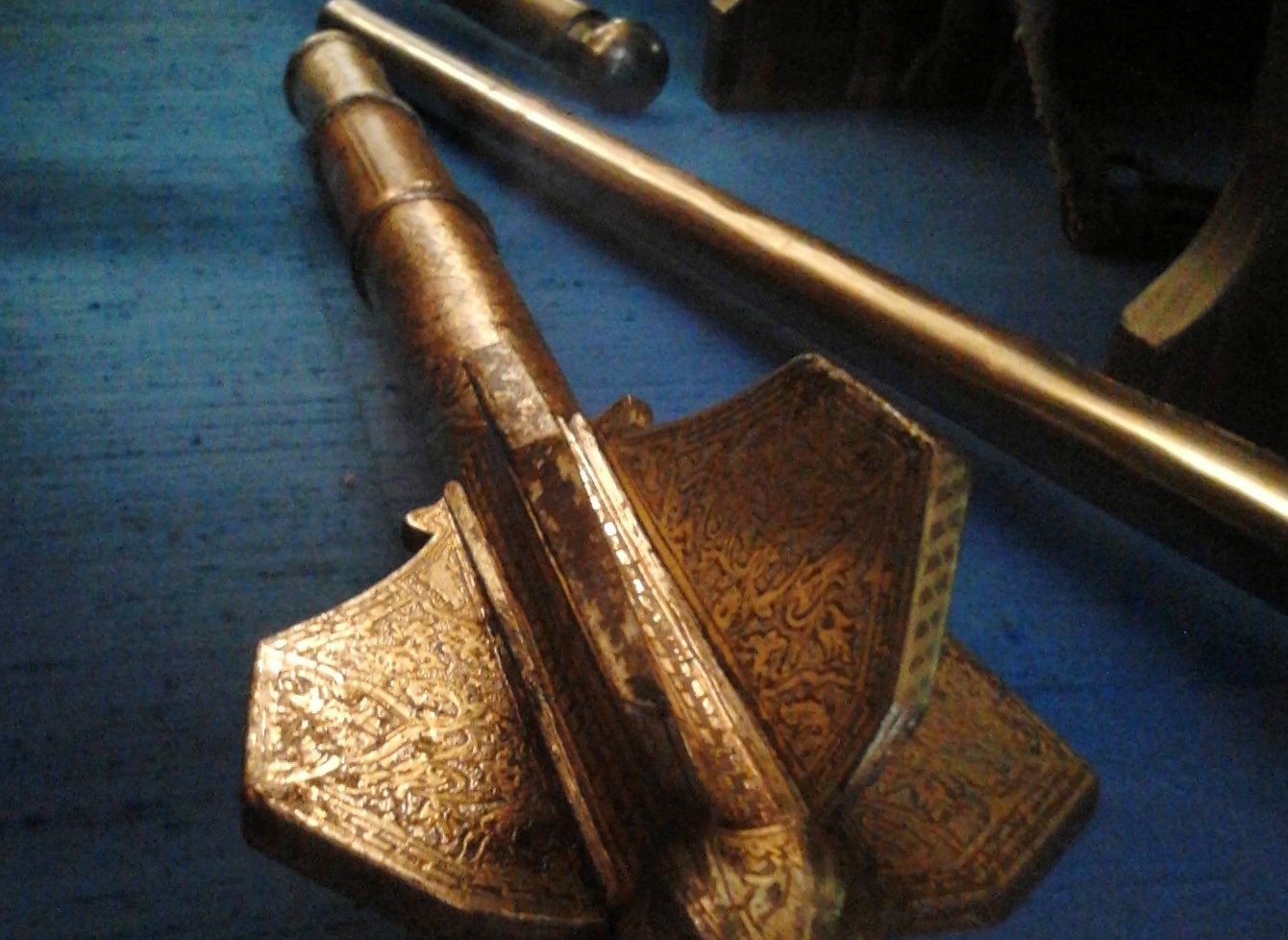 Kunsthistorisches Museum, CC0, Wikimedia Commons
Kunsthistorisches Museum, CC0, Wikimedia Commons
Rondel Dagger
With distinctive round guards, rondel daggers slipped easily into armor gaps during combat. Ideal for close-quarters fights, they served knights and infantry alike. At the Battle of Agincourt, English archers notably used rondel daggers to finish off heavily armored French knights.
 Hans Talhoffer, Wikimedia Commons
Hans Talhoffer, Wikimedia Commons
War Hammer
Combining blunt hammerheads with penetrating spikes, war hammers excelled at piercing armor. Its compact design favored sidearms in armored combat.
 Wolfgang Sauber, CC BY-SA 3.0, Wikimedia Commons
Wolfgang Sauber, CC BY-SA 3.0, Wikimedia Commons
Falchion
Single-edged, heavy-bladed falchions combined cleaving power with affordability. Popular among infantrymen, their efficiency made them widespread battlefield weapons.
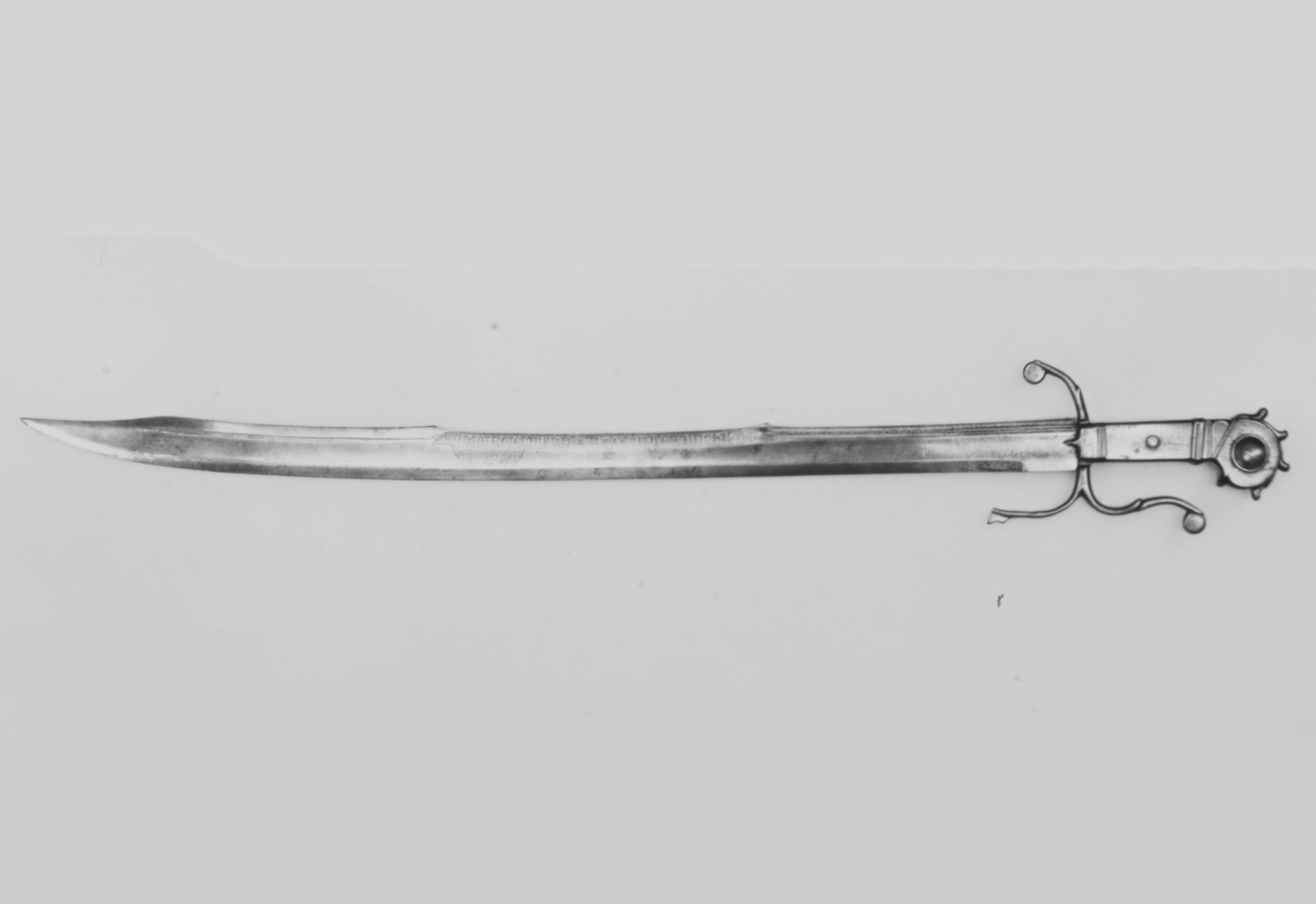 Metropolitan Museum of Art, CC0, Wikimedia Commons
Metropolitan Museum of Art, CC0, Wikimedia Commons
Bardiche
Large, axe-like bardiches provided reach and leverage, ideal against mounted foes. The long blade and handle made it devastatingly effective during infantry clashes.
 Unknown Author, Wikimedia Commons
Unknown Author, Wikimedia Commons
Partisan Spear
Partisan spears featured broad, blade-like heads useful for slashing as well as thrusting. Versatile and lethal, they remained popular among medieval militias.
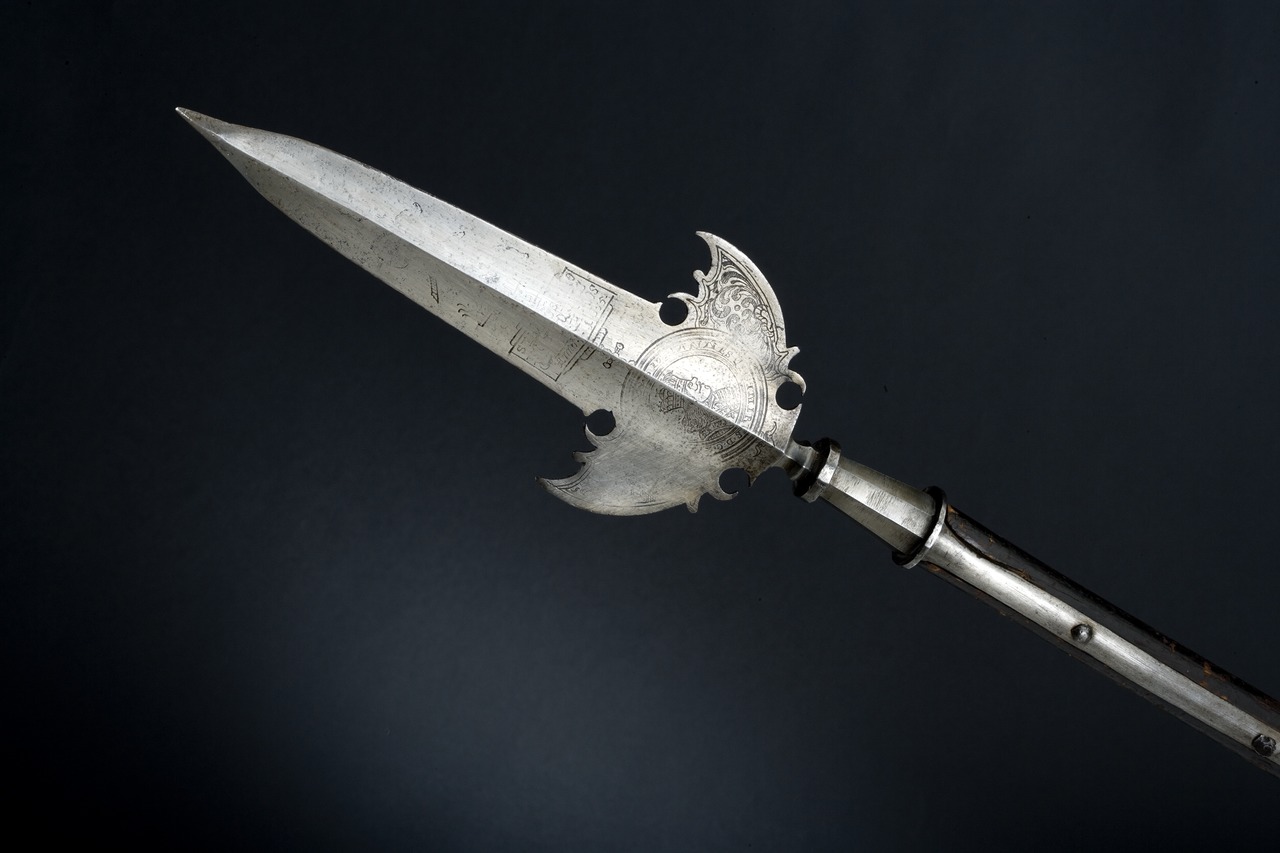 Livrustkammaren (The Royal Armoury), Göran Schmidt, CC BY-SA, Wikimedia Commons
Livrustkammaren (The Royal Armoury), Göran Schmidt, CC BY-SA, Wikimedia Commons
Poleaxe
A combination of axe blade, hammer, and spike, poleaxes offered versatility in combat. Particularly effective against heavily armored knights, their use became widespread. Poleaxes were especially valued for their ability to both crush armor and pierce through it, making them ideal for defeating well-protected foes.
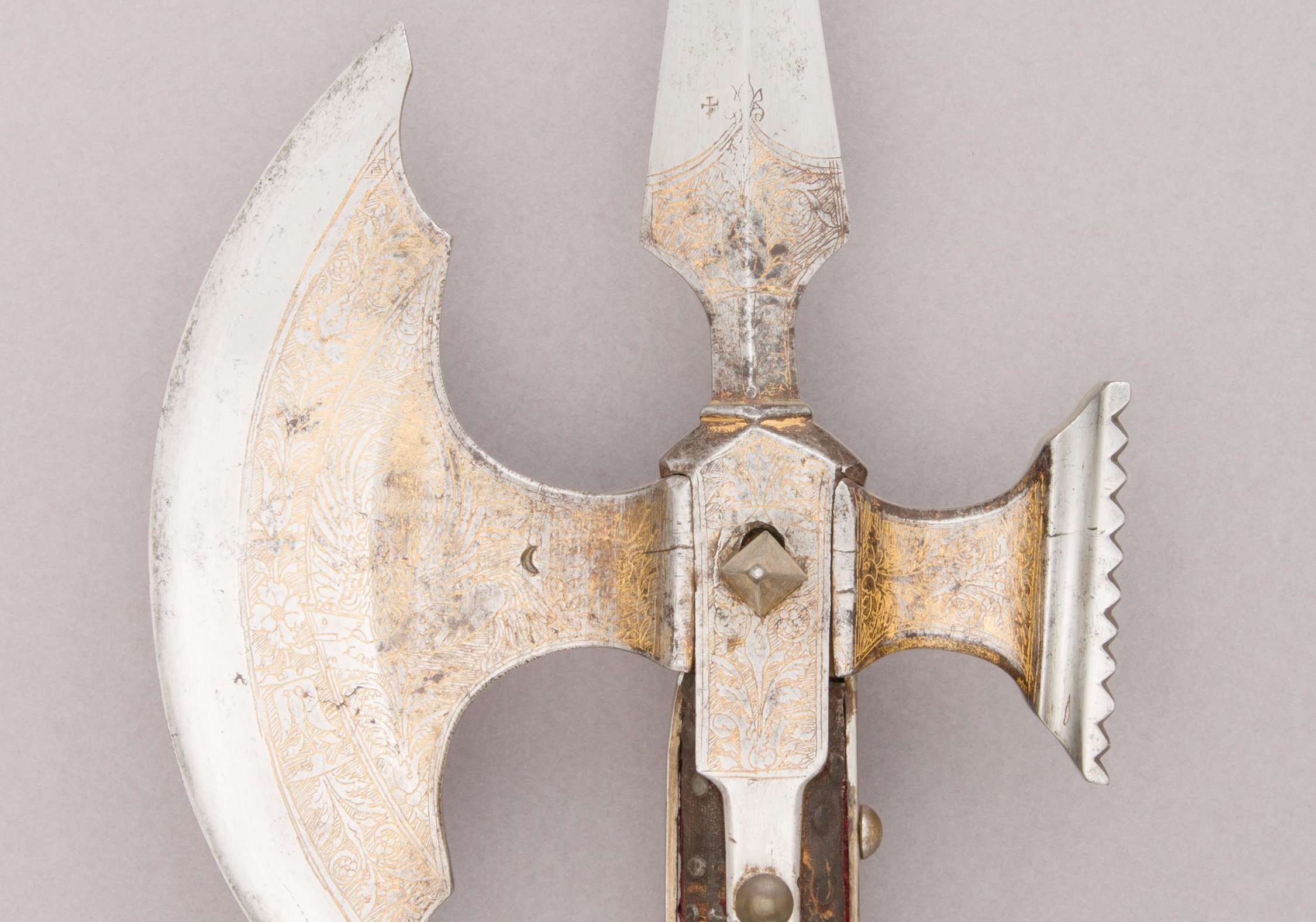 Metropolitan Museum of Art, CC0, Wikimedia Commons
Metropolitan Museum of Art, CC0, Wikimedia Commons
Claymore
The iconic Scottish claymore featured a large two-handed design suitable for devastating slashes. Popularized by Scottish Highlanders, it symbolized national pride and martial prowess. At up to six feet long, the claymore provided warriors the reach needed to overpower enemy infantry formations.
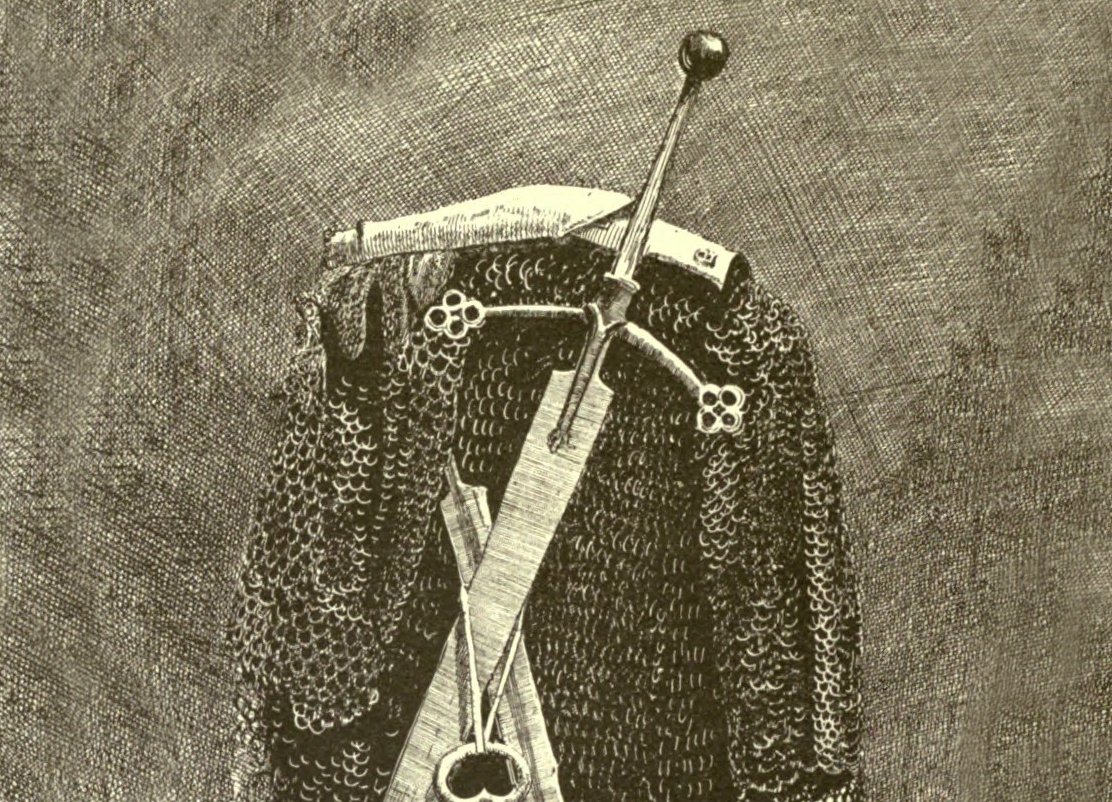 Lancelot Speed, Wikimedia Commons
Lancelot Speed, Wikimedia Commons
Glaive
A glaive featured a curved blade atop a long shaft, combining reach and cutting capability. Its affordability and ease of use made it accessible to common infantry, significantly impacting medieval battling.
Trebuchet
First designed in 4th century BC China, trebuchets hurled heavy projectiles or even rotting corpses at enemy castles. The crude biological warfare spread disease, effectively weakening defenders. The immense power of trebuchets could also shatter castle walls, breaching fortifications and demoralizing the enemy.
You May Also Like:
The Most Bizarre Weapons In History
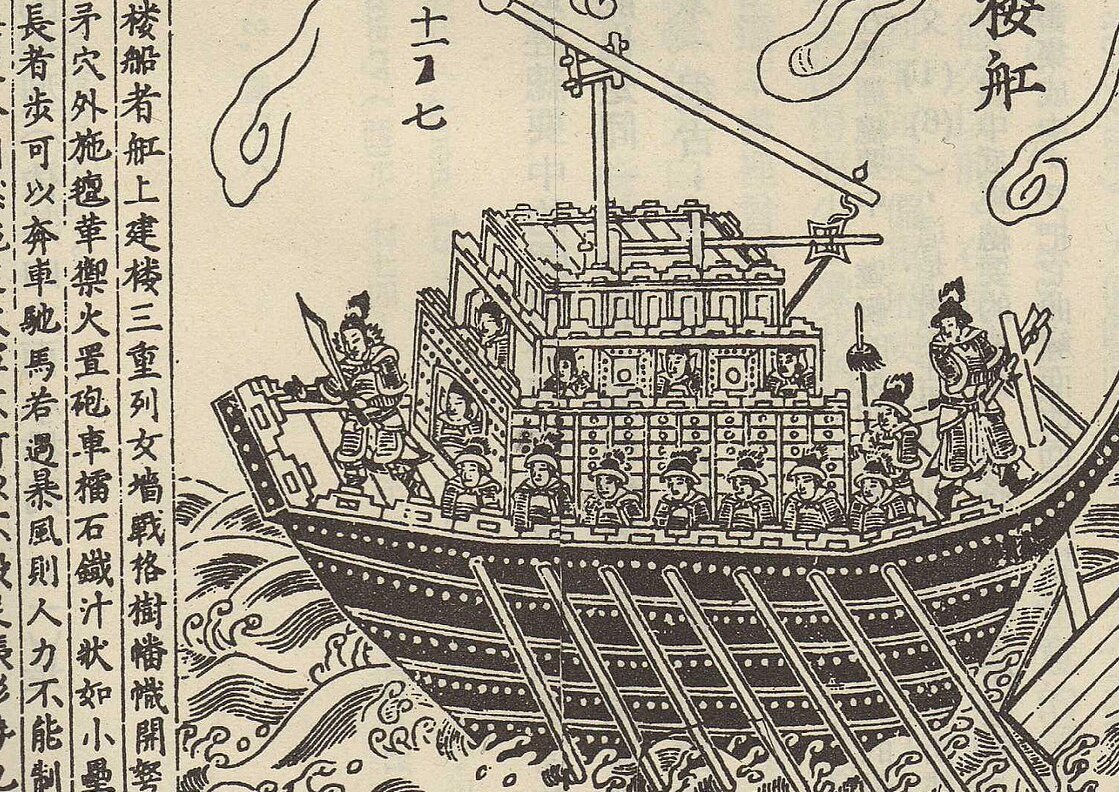 Zeng Gongliang, Wikimedia Commons
Zeng Gongliang, Wikimedia Commons

